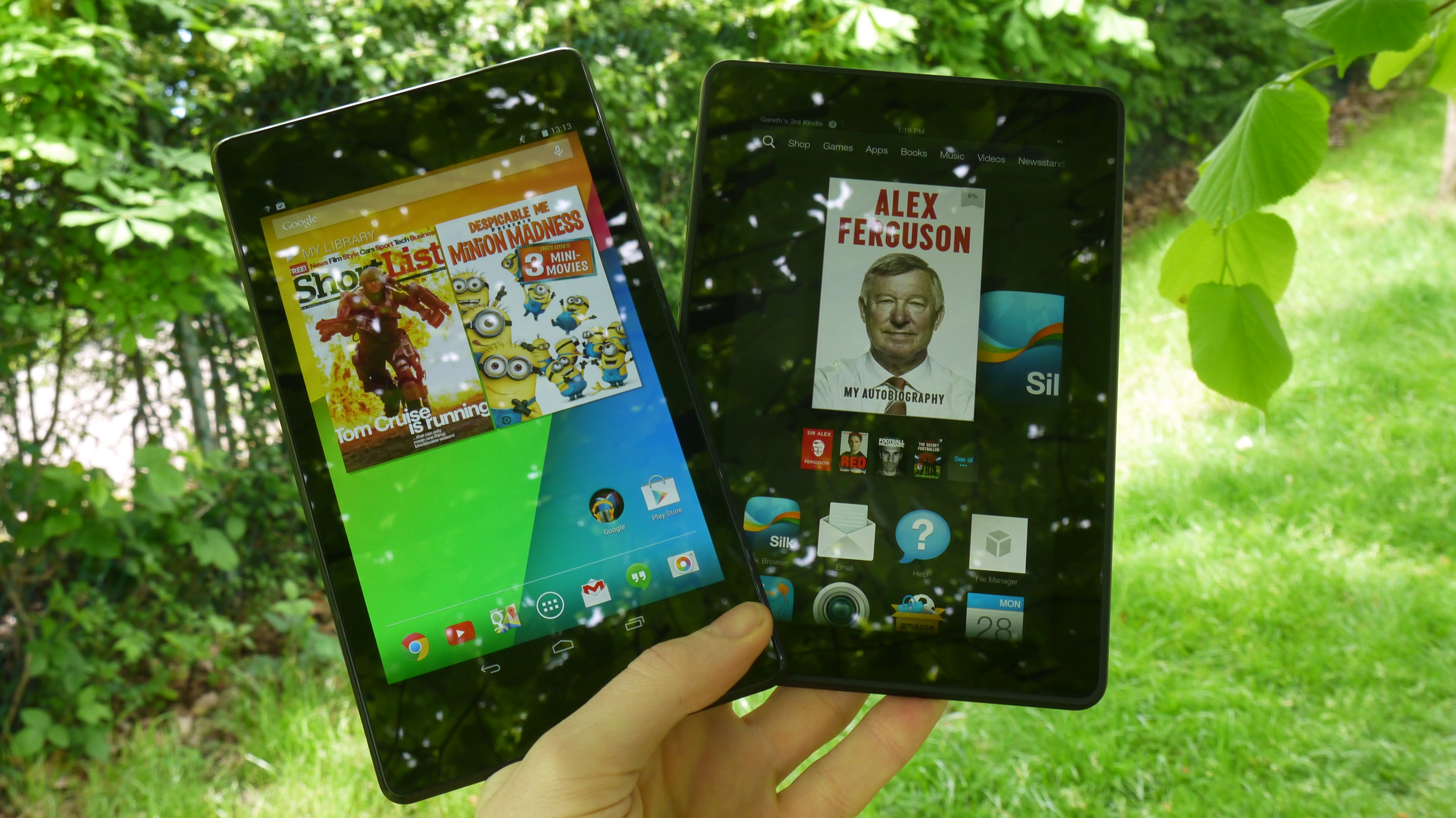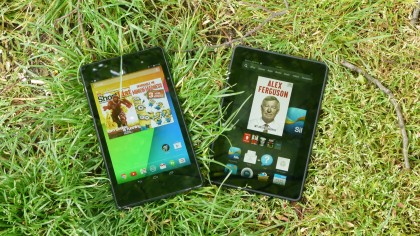Google Nexus 7 (2013) vs Amazon Kindle Fire HDX 7
The battle of the budget 7 inchers

The Google Nexus 7 (2013) and Amazon Kindle Fire HDX 7 - when you think of budget Android tablets these are the two most likely to spring to mind.
Sure the 7-inch tablet market is now inundated with offerings - mostly Android based - but these two behemoths still rise up above the crowd.
Both offer a strong set of specs for highly attractive price tags, so it can be difficult to work out which one is best for you.
We're going to delve deeper into both tablets to discover how they compare (and contrast), giving you a much better idea of which tablet will suit your needs.
Design
The Asus made Google Nexus 7 is the slightly more compact of the two tablets here measuring 200 x 114 x 8.7mm, compared to the 186 x 128 x 9mm Kindle Fire HDX 7.
It means the Nexus 7 is a touch taller than its Amazon rival, but its more slender frame means it's also lighter with the Wi-Fi only model tipping the scales at 290g and the cellular version registering 299g.

The Kindle Fire HDX 7 isn't particularly heavier at 303g and 311g respectively, but that does translate to a very slight additional heft in the hand.
Sign up for breaking news, reviews, opinion, top tech deals, and more.
Asus has kept the same rounded design from the original Nexus 7, but has slimmed down the newer version and applied a soft touch rear which hugs the sides of the tablet.
This makes for a comfortable and grippy service which feels pleasant to the touch, and its lightweight nature means you can easily hold the Nexus 7 in one hand - you can even grab a corner with thumb and forefinger like you would a book.
Bezels down either side of the screen (when in portrait) are relatively slender while there is a significant chunk of vacant space above and below the display.

Turn the Nexus 7 landscape however and that additional space comes in handy as it gives you somewhere to rest your fingers. That's especially useful if you're watching a movie or TV show.
From the rounded design of the Nexus 7 to the angular stylings of the Kindle Fire HDX 7, and immediately it feels chunkier than its Google rival.
The sharp edges and defined slopes on the rear gives the illusion that there's a bigger difference in depth between the two tablets - in reality though the difference is just 0.3mm.
Amazon has opted for a similar soft-touch finish on the rear of the HDX 7, and it too wraps round the sides of the tablet to meet the glass front.

Again this provides a good level of grip and you can just as easily hold the Fire HDX 7 in one hand without your wrist giving way.
The soft touch rubber is broken up by a glossy strip of plastic on the Kindle Fire HDX though, and this houses the dual speaker grills.
It makes the tablet look a little more interesting, but the glossy plastic finish is a magnet for fingerprints and it can end up looking mucky rather quickly.
There are suitable bezels all the way round the screen, which means there's always space to rest a finger, but also makes the Kindle Fire HDX looks rather bulky.
Both tablets feel solid and well built, while button, speaker and microUSB port locations are all well placed for easy manipulation.
The reviews
|
Display
As we've already mentioned both tablets sport 7-inch displays, but even though they share the same 1200 x 1920 resolution and 323ppi pixel density they aren't completely identical.
Both Amazon and Asus have opted for a 16:10 aspect ratio on the screens which is better suited to movie playback. Apple's iPad range uses the squarer 4:3 format.

The Kindle Fire HDX uses IPS LCD technology which produces bright, clear images on screen, but the Nexus 7 features LED-backlit IPS LCD tech offering up even brighter and more natural colours.
Whites and blacks are better defined here and this provides a more realistic finish which is especially obvious when it comes to watching movies and TV shows.
You won't be disappointed with the display on the Kindle Fire HDX, as it's still a great offering, but if you find yourself next to someone with a Nexus 7 there may be a touch of jealously coursing through your veins.

TechRadar's former Global Managing Editor, John has been a technology journalist for more than a decade, and over the years has built up a vast knowledge of the tech industry. He’s interviewed CEOs from some of the world’s biggest tech firms, visited their HQs, and appeared on live TV and radio, including Sky News, BBC News, BBC World News, Al Jazeera, LBC, and BBC Radio 4.